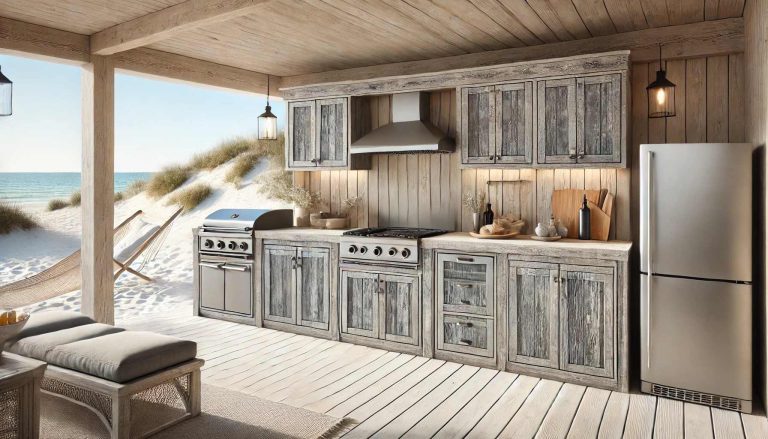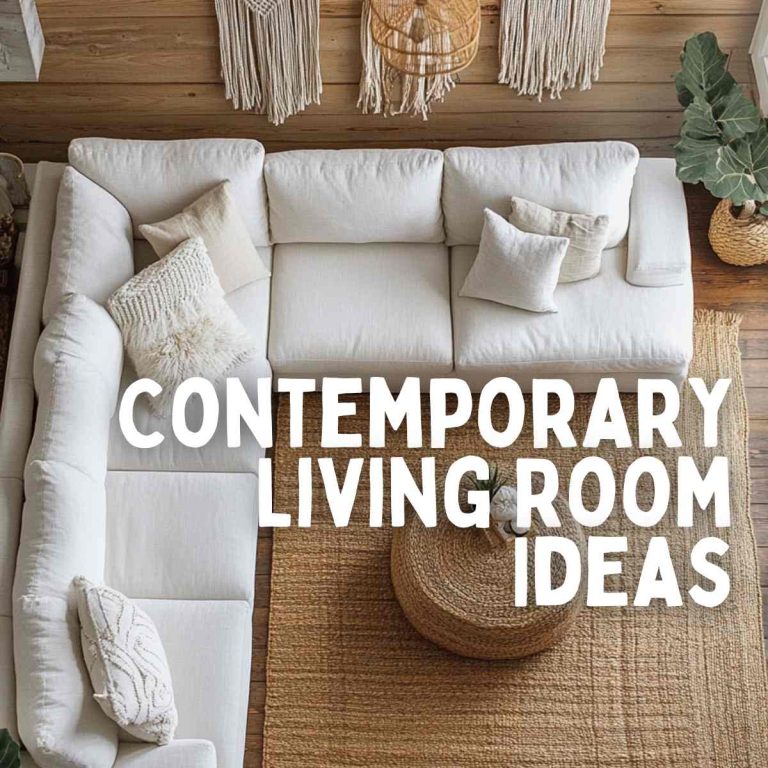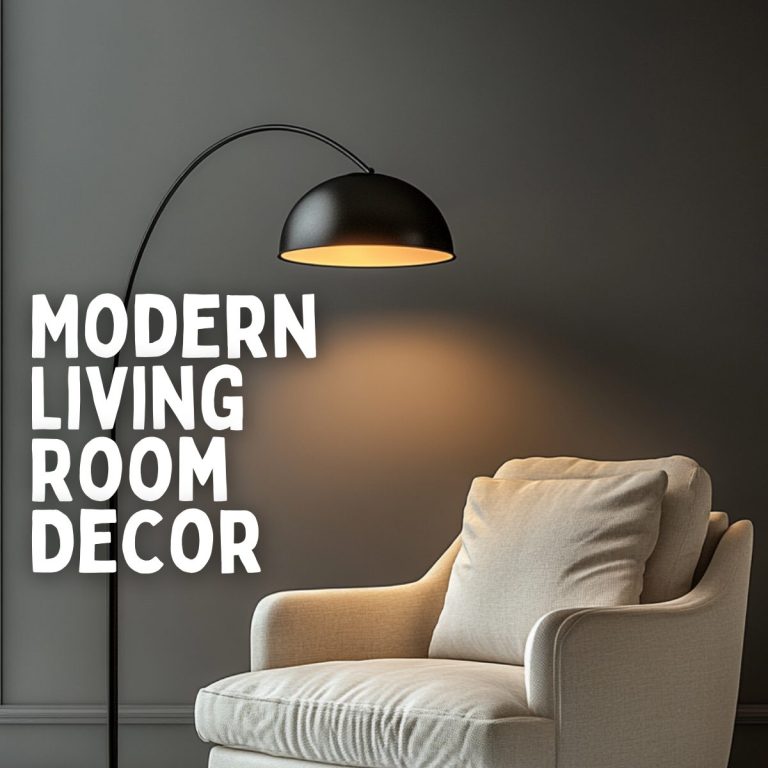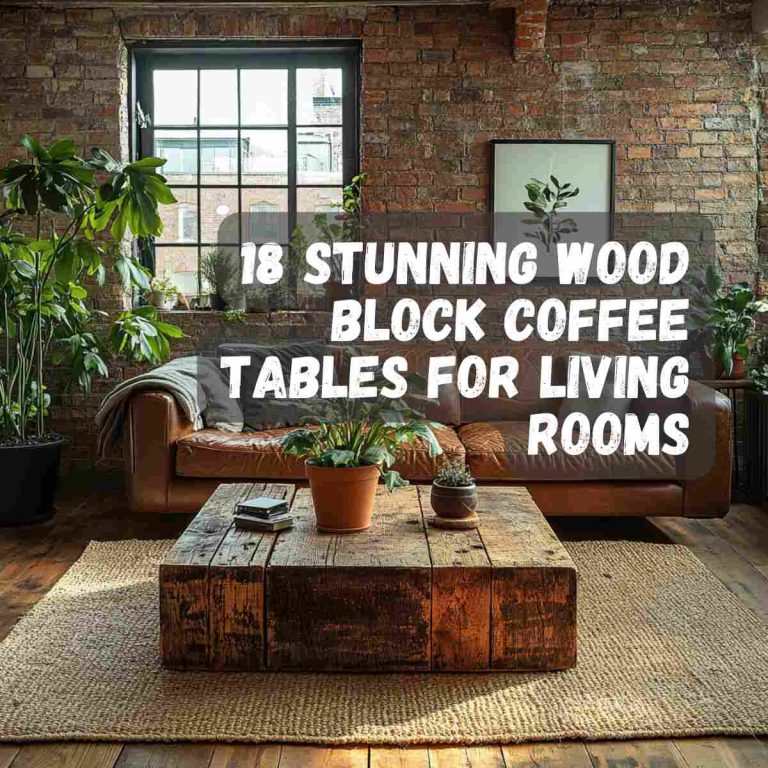Modern Minimalist Bedroom Ideas for a Sleek Look
As the world around us grows more chaotic and overstimulating, many people are choosing to create spaces that promote peace and clarity. Nowhere is this more vital than in the bedroom—a sanctuary meant for rest, reflection, and renewal. The minimalist bedroom is a response to this modern need. With its emphasis on simplicity, clean lines, and intentional design, a minimalist bedroom removes distraction and enhances comfort, making it the ideal retreat for modern living.
Modern minimalism isn’t about having nothing; it’s about having only what matters most. It’s about crafting a space that is as functional as it is beautiful—where every piece of furniture, every color, and every texture is chosen deliberately. Whether you’re starting from scratch or paring down an existing setup, this guide offers rich, thoughtful inspiration for creating a sleek and stylish minimalist bedroom.

Understanding the Core of Minimalism in Bedroom Design
At its foundation, minimalism is a design philosophy that revolves around the idea that less is more. Instead of filling a space with objects to occupy visual space, minimalist design focuses on clarity, calmness, and purpose. It’s not about empty rooms or stark surroundings—rather, it’s about intentional living.
In a minimalist bedroom:
- Every item has a role—whether it’s comfort, utility, or beauty.
- Space is emphasized as much as objects; negative space is considered a design element.
- Clutter is eliminated, both physical and visual, to reduce stress and enhance mental clarity.
Psychologically, a minimalist bedroom supports better sleep and improved mood by reducing stimulation and creating an environment that encourages stillness. Minimalism invites you to slow down, reflect, and reconnect with yourself at the end of each day.
Choosing the Right Color Palette
Color has a profound influence on the mood and energy of a space. In a minimalist bedroom, the palette is understated, cohesive, and soothing, allowing your mind to rest and the eyes to relax.
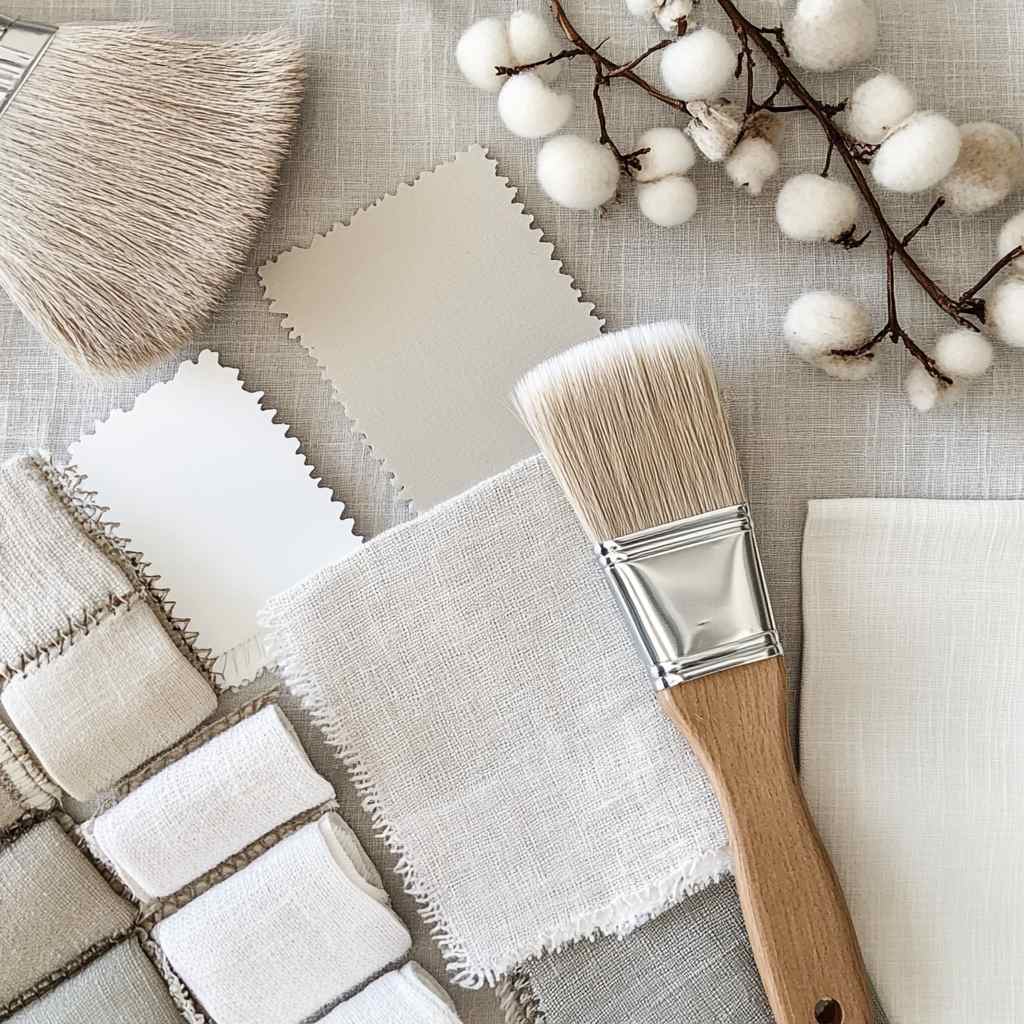
Neutral tones are foundational:
- White brings freshness, openness, and the illusion of space.
- Gray offers sophistication, acting as a grounding backdrop.
- Beige and taupe introduce warmth and natural undertones that feel cozy yet clean.
- Soft pastels like sage green, muted blush, or powder blue introduce subtle color without overwhelming the senses.
Some minimalists prefer a monochromatic color scheme, playing with different shades and textures of a single hue. Others introduce controlled contrast, such as black accents against a white backdrop, to create visual interest.
The key is restraint: instead of many colors, focus on fewer tones used in richer ways. Incorporate texture through fabrics and materials to bring depth and tactile interest to your palette.
Furniture Selection: Simple Yet Functional
Minimalist furniture is all about clean design and high functionality. Think streamlined silhouettes, sleek finishes, and unobtrusive designs that blend into the background while serving a practical purpose.
Essentials include:
- A low-profile bed or platform bed that grounds the room and emphasizes horizontal lines
- A floating nightstand or small side table with closed storage
- A wardrobe or dresser with a clean facade—no ornate handles or intricate detailing
- Optional: a simple chair or bench at the foot of the bed
When choosing furniture, prioritize quality over quantity. One beautifully made bedframe in solid wood or matte black metal will do far more for the room than an ornate suite of matching furniture. The fewer pieces you have, the more breathing room you give the ones that remain.

Look for multi-functional items:
- Storage beds with drawers beneath
- Nightstands with integrated charging stations
- Foldable desks or wall-mounted vanities
Minimalism doesn’t mean living with less convenience—it means choosing smarter solutions that reduce clutter while enhancing usability.
Decluttering Techniques for a Clean Slate
Decluttering is the first and most essential step toward a minimalist bedroom. Without clearing the excess, any effort to design with minimalism in mind will only mask the chaos instead of removing it.

Start with a full reset:
- Empty the room as much as possible—remove everything from surfaces, drawers, and under the bed.
- Sort by category, not location: clothing, books, tech, décor, etc.
- Ask, “Do I use this? Does this serve me? Does this enhance my life?”
- Let go of anything that doesn’t align with your needs or aesthetic vision.
Use tools like the KonMari method, which emphasizes emotional connection to possessions, or the Four Box Method—keep, donate, trash, relocate. Apply this same thinking digitally by tidying up charging cords, hiding tech, and streamlining devices.
Remember: a clutter-free room is not the end goal, but the starting point for minimalist design. Once cleared, your room becomes a canvas for calm, clear living.
Minimalist Storage Solutions
To support a minimalist lifestyle, smart and seamless storage is crucial. The goal is to tuck away necessities without creating visual bulk.

Clever storage ideas for minimalist bedrooms:
- Under-bed drawers or rolling bins for seasonal clothes or linens
- Built-in wardrobes with sliding or flush doors that disappear into the wall
- Floating shelves or recessed wall niches to hold essentials without crowding floor space
- Woven baskets, soft bins, or linen boxes that blend with your décor and conceal small items
Think vertically: make use of your vertical space by installing shelves or wall-mounted organizers. Avoid open shelving unless meticulously styled—closed storage is more forgiving and reduces visual clutter.
Every storage solution should serve a dual purpose: functional and beautiful. Let your bedroom feel spacious even when it’s fully stocked.
Bedding and Textiles: Soft, Layered, and Light
Your bed is the centerpiece of your bedroom—both visually and functionally. In minimalist design, it’s also where comfort meets clarity.
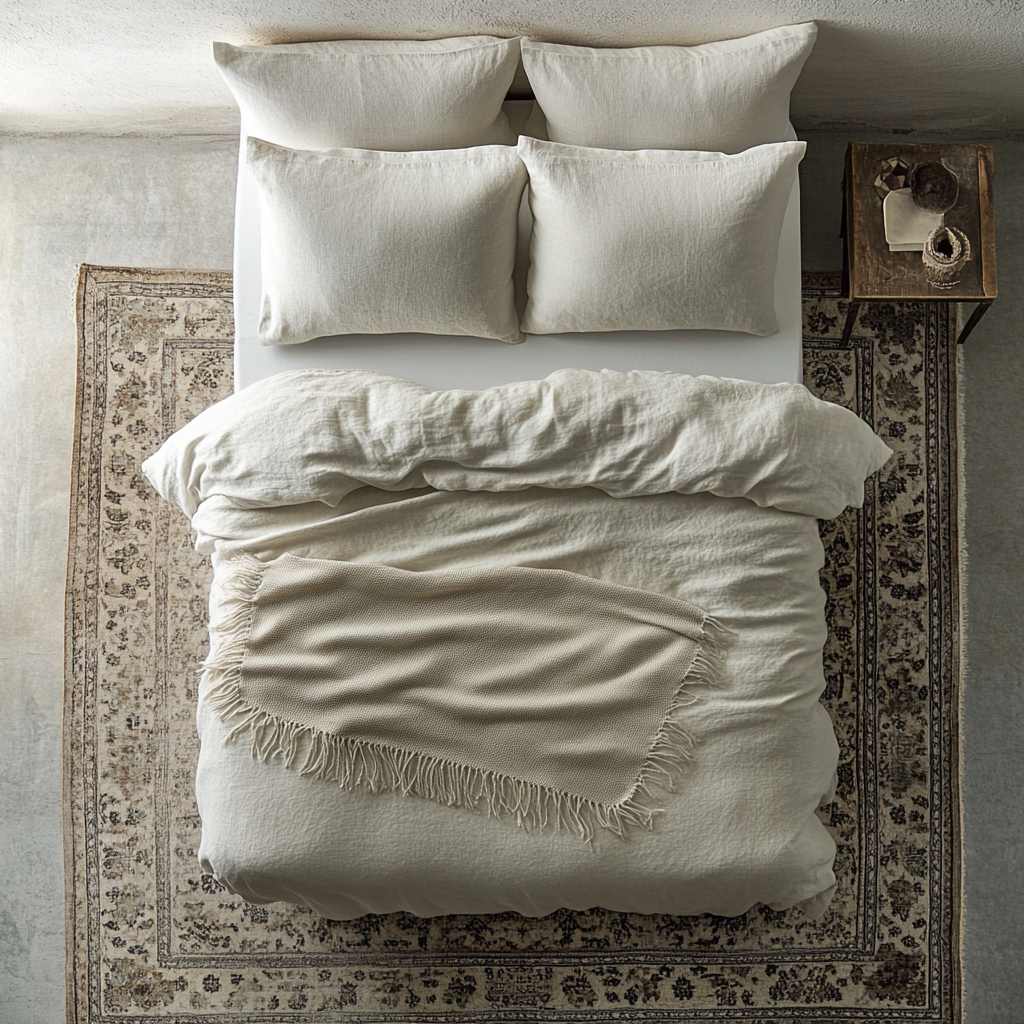
Choose bedding with:
- Natural materials: linen, organic cotton, bamboo
- Muted tones: soft whites, grays, creams, or pale blush
- Simple patterns or solids: avoid busy designs
Minimalism doesn’t mean skipping layers—it means layering mindfully. Add warmth and texture with:
- A single textured throw folded neatly at the foot of the bed
- 2–4 pillows max, stacked or aligned with care
- A lightweight duvet with a clean-lined cover
Avoid over-accessorizing the bed. Let crisp corners, soft fabrics, and subtle contrast do the work. The goal is to create a bed that invites rest while maintaining the room’s serene aesthetic.
Lighting That Enhances the Minimal Aesthetic
Lighting should be functional, warm, and unobtrusive—enhancing the room without drawing too much attention to itself.

Key minimalist lighting elements:
- Natural light is king—maximize it with sheer curtains or unobstructed windows
- Wall-mounted sconces instead of bulky table lamps
- Pendant lights with simple, sculptural shapes
- Recessed ceiling lighting for even distribution
- Dimmable switches for mood control
Opt for warm white LED bulbs to keep the room inviting. Avoid harsh, cool lights that make the space feel clinical.

Light fixtures themselves can act as art—choose ones with organic shapes, matte finishes, or warm metals like brass or blackened steel.
Minimalist Art and Décor: Less but Impactful
In minimalist design, art is not eliminated—it’s elevated. Instead of filling every wall, select a few high-impact pieces that resonate with your personality or mood.
Options include:
- Black-and-white photography with emotional resonance
- Abstract paintings with neutral or earthy tones
- Single-line drawings framed with plenty of white space
- Sculptural wall décor or even a well-designed mirror

Each piece should be given space to breathe. Allow for empty walls, blank corners, and bare surfaces—they provide balance and focus, letting your few chosen accents stand out.
Indoor Plants for a Breath of Life
Minimalist bedrooms can still feel alive and organic, and plants are one of the best ways to achieve this balance.
Choose low-maintenance varieties:
- Snake plant (great for air purification)
- ZZ plant (tolerates low light)
- Pothos (trails beautifully from a shelf)
- Peace lily (offers soft white blooms)

Use minimalist planters in natural tones—white ceramic, matte black, or textured concrete. Limit yourself to one or two plants per room to maintain clarity and avoid crowding.
Plants add movement, freshness, and a touch of color—the perfect contrast to a controlled color palette.
Flooring and Rugs: Keep It Simple Underfoot
Flooring in a minimalist room should be visually light and tactilely warm. It creates the foundation of the space and should complement the other elements without distracting from them.
Top choices:
- Light wood floors: ash, birch, oak
- Polished concrete: sleek and industrial, perfect for modern minimalism
- Matte-finish laminate: affordable and easy to maintain

Anchor your bed with a minimalist area rug:
- Natural fibers like jute or wool
- Neutral colors: ivory, stone, muted gray
- Low pile for easy maintenance and clean lines
Place the rug under the bottom two-thirds of the bed to visually center the room and add softness underfoot.
Technology and Minimalism: Smart, Sleek Solutions
Incorporating technology in a minimalist bedroom means choosing gadgets that are discreet, integrated, and useful.
Suggestions:
- Smart lights with voice or app control
- Built-in USB outlets and wireless charging trays
- Hidden cable management systems
- Wall-mounted smart speakers or audio panels

Avoid cluttered nightstands full of tangled cords or multiple remotes. Opt for tech that blends into the background and enhances your routines with less visual noise.
Accent Walls and Minimalist Wallpapers
An accent wall in a minimalist space is subtle, textural, and clean. It brings visual depth without disrupting simplicity.
Popular minimalist accent options:
- Vertical wood paneling or fluted wall designs
- Concrete or plaster finishes for raw texture
- Peel-and-stick wallpapers with geometric or woven patterns in subdued hues

Painted accent walls in deep charcoal, olive, or navy can also create a cocoon-like effect. Keep furniture on that wall simple to preserve balance.
Creating a Cozy Yet Minimalist Reading Nook
Adding a reading nook is a great way to make your bedroom functional and inviting without breaking the minimalist flow.
Ideas:
- A small armchair with clean lines
- A narrow bookshelf with only current or favorite reads
- Soft lighting from a floor lamp or adjustable sconce
- A muted-toned throw blanket for comfort

Keep accessories minimal. Let the area reflect your love for quiet time without turning it into a storage corner.
Seasonal Refresh Tips Without Adding Clutter
You don’t need to redecorate to refresh your room—just rotate a few thoughtful details.
Ways to do this:
- Swap pillowcases or duvet covers in seasonal colors
- Change out art or greenery based on the time of year
- Use seasonal scents in candles or diffusers (think lavender in spring, cedar in fall)

These gentle changes let your space evolve while staying true to minimalist principles.
Final Touches: Scent, Sound, and Feel
The last layer of a minimalist bedroom is sensory design. These subtle cues complete the atmosphere and encourage relaxation.
Try:
- Aromatherapy diffusers with calming scents
- Soft instrumental music or nature sounds via hidden speakers
- Comfortable throws in natural textures like linen or wool
When every sense is considered, the minimalist bedroom becomes not just a look—but a lifestyle of intentional comfort.
Conclusion
Creating a modern minimalist bedroom means more than reducing clutter—it means reshaping your space into one that reflects peace, purpose, and personal values. With thoughtful design, functional furniture, smart storage, and curated aesthetics, you can create a bedroom that soothes your senses and restores your energy.
Minimalism isn’t about perfection—it’s about intention. Start small, design deliberately, and let your bedroom become the ultimate reflection of a calm, balanced life.
FAQ: Modern Minimalist Bedroom Ideas
What are the essential items in a minimalist bedroom?
A minimalist bedroom typically includes a bed, nightstand, dresser, and possibly a chair or lamp—nothing more than what you truly use.
Can minimalism still feel cozy?
Absolutely. Through layered textiles, warm lighting, and a few natural touches like wood and plants, a minimalist room can feel very inviting.
How do I maintain a minimalist bedroom long-term?
Practice regular decluttering, avoid impulse décor buys, and stick to a neutral base to simplify seasonal updates.
What’s the best color scheme for a minimalist bedroom?
Neutral tones—white, gray, beige—are most common. You can add subtle accent colors for warmth and depth.
Is minimalist design only for large bedrooms?
Not at all. Minimalism works exceptionally well in small bedrooms by reducing clutter and maximizing space.

